19th-Century Flame Mahogany Mantel Clock by BREGUET Raised by Lion Paw Feet
£23,500
Request Information
Follow Us
19th-Century Flame Mahogany Mantel Clock by BREGUET Raised by Lion Paw Feet
EXTREMELY RARE MANTEL CLOCK WITH A FIGURED MAHOGANY-VENEERED CASE by A-L BREGUET
Abraham-Louis Breguet (1747-1823), who was of Swiss origin, is undoubtedly the most celebrated clockmaker of the late eighteenth and early nineteenth centuries in France. He is responsible for the invention of the self-winding watch, the tourbillon and the sympathetic watch ( a watch that is placed in a cradle of a special clock. It is then linked by means of a pin fixed behind the clock dial. Built into the motion work which, when released by the clock, automatically sets the hands to the clock’s time as well as correcting the watch’s regulator necessitated by any degree of inaccuracy registered at the moment of synchronisation) and many other horological improvements and developments. Around the year 1807 Breguet brought in his son, Antoine-Louis (born 1776), as a business partner, and from this point, the firm became known as Breguet et Fils. Breguet had previously sent his son to London to study with the great English chronometer maker John Arnold, and such was the friendship that Arnold, in turn, sent his son, John Roger, to spend time with Breguet. Later the House of Breguet was founded, which is still in existence today, mainly producing high quality watches. There are about a dozen clocks by Breguet in the Royal Collection, with George III being a first and very good client.
The present clock is one of two made in the mid-1790s (the other numbered 209), probably prototypes for his later complex mahogany cased travelling clocks, which were produced in the French Empire period. Typically, the two very similar clocks are slightly different, as Breguet never made exactly the same clock. The case foreshadows the austere style of the Empire period. The number, almost certainly 208, could not be traced.
The austere mahogany-veneered oak case has a vertical slide at the back to access the movement, the winding arbors, the hand setting knob, as well as the regulation knob. This allows the front to be very sober. Close to the bottom is a very gentle moulin to create the impression of a base. The case rests on four fine gilt brass claw feet.
The circular enamel dial has a fine chapter ring with Arabic hour numerals, Arabic quarter-hour, five-minute and minute divisions. It is protected by a convex glass, set in a fixed brass bezel.
The superb spring-driven eight-day movement has going and striking trains. The going train has anchor escapement with a short silk-suspended pendulum (original) and a count-wheel controlled striking train, indicating the hours fully and the half hours with one stroke on a bell unusually mounted on top of the movement. The clock comes with its original winding key.
Condition
Good. Wear consistent with age and use. Fabulous condition, perfect working order.
Dimensions
Height: 11.03 in. (28 cm)
Width: 7.09 in. (18 cm)
Depth: 5.52 in. (14 cm)
Literature
Tardy, Dictionnaire des Horlogers Français, Paris, 1971, pp. 84-97
J.-D. Augarde, Les Ouvriers du Temps, Antiquorum, 1996, pp. 288-90
G. Daniels, The Art of Breguet, London, 1974, passim.
PREVIOUSLY SOLD
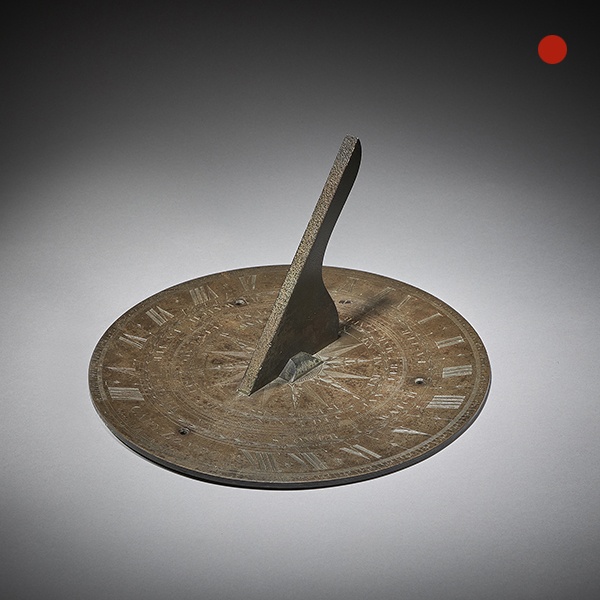
Early 19th Century English Bronze Horizontal Sundial by Cary of London
Early 19th Century English Bronze Horizontal Sundial by Cary of London £2,450 Follow UsEarly 19th Century English Bronze Horizontal Sundial by Cary of London An early 19th-century horizontal sundial by Cary London. This 12” diameter bronze...
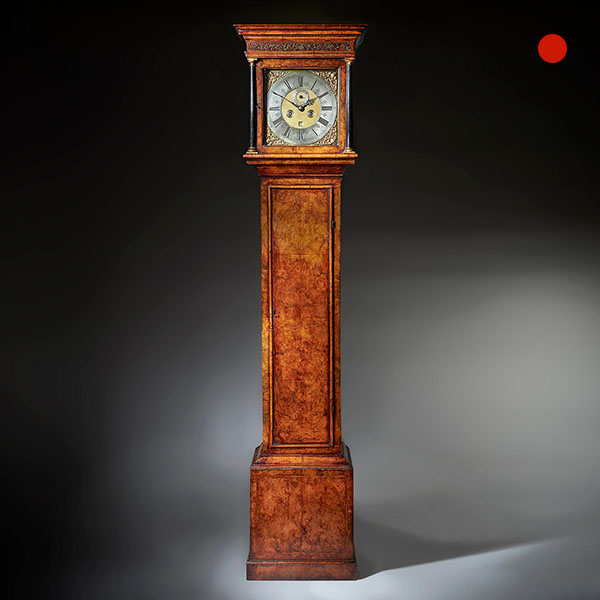
A Fine 18th-century Queen Anne Burr Walnut Eight-Day Longcase Clock
A Fine 18th-century Queen Anne Burr Walnut Eight-Day Longcase Clock Sold Follow UsA Fine 18th-century Queen Anne Burr Walnut Eight-Day Longcase Clock A superb early 18th-century eight-day Queen Anne longcase clock by the famous maker...
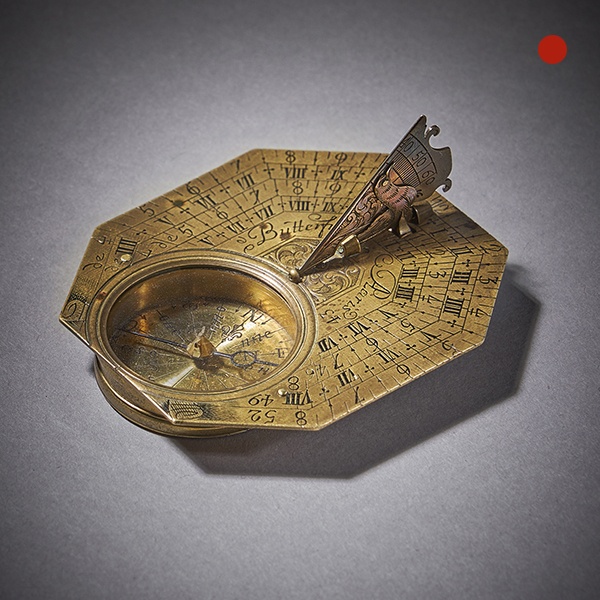
Fine Brass Pocket Sundial and Compass by Michael Butterfield Paris, circa 1700
Fine Brass Pocket Sundial and Compass by Michael Butterfield Paris Sold Follow UsFine Brass Pocket Sundial and Compass by Michael Butterfield Paris A fine brass Anglo-French octagonal pocket sundial with compass by Michael Butterfield, circa...
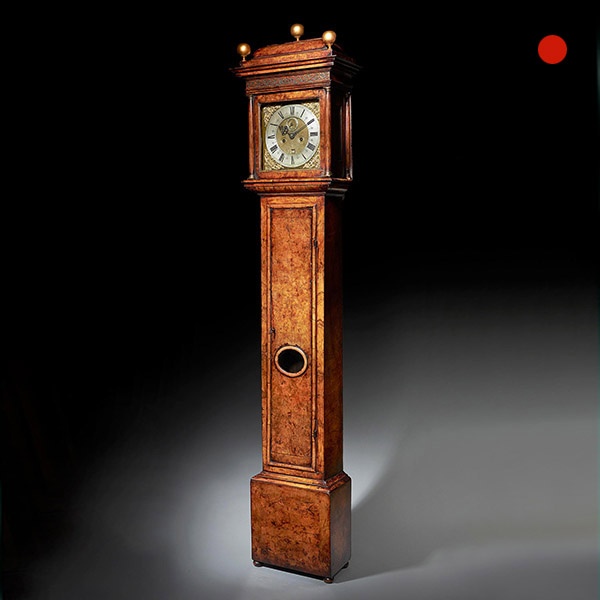
17th Century William and Mary Eight Day Burr Walnut Longcase Clock, John Martin
17th Century William and Mary Eight Day Burr Walnut Longcase Clock, John Martin Sold Follow Us17th Century William and Mary Eight Day Burr Walnut Longcase Clock, John Martin The attractive burr walnut-veneered oak case is of classic design...

18th Century German Equinoctial Pocket Sundial and Compass by Ludwig Theodor
18th Century German Equinoctial Pocket Sundial and Compass by Ludwig Theodor SOLD Follow Us18th Century German Equinoctial Pocket Sundial and Compass by Ludwig Theodor From the first quarter of the 18th century - a German brass equinoctial...
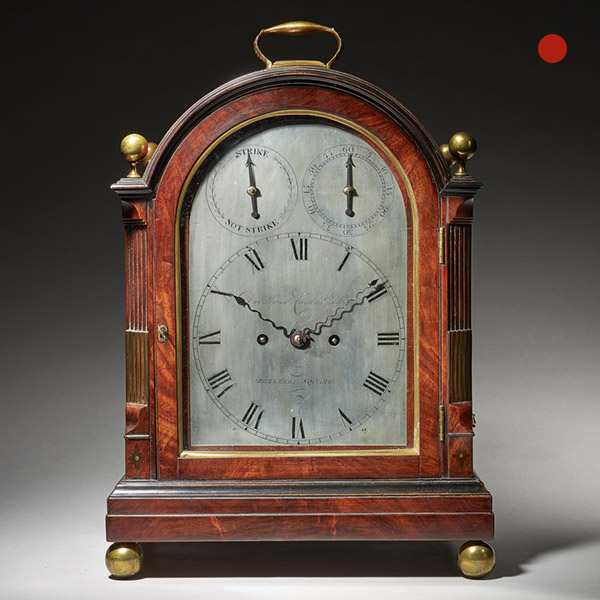
Fine George III Eight-Day Striking Mahogany Bracket Clock with Trip Repeat
Fine George III Eight-Day Striking Mahogany Bracket Clock with Trip Repeat SOLD Follow UsFine George III Eight-Day Striking Mahogany Bracket Clock with Trip Repeat A fine George III eight-day striking mahogany bracket clock with trip repeat...

Early 19th Century English Bronze Horizontal Sundial by Cary of London
Early 19th Century English Bronze Horizontal Sundial by Cary of London £2,450 Follow UsEarly 19th Century English Bronze Horizontal Sundial by Cary of London An early 19th-century horizontal sundial by Cary London. This 12” diameter bronze...

A Fine 18th-century Queen Anne Burr Walnut Eight-Day Longcase Clock
A Fine 18th-century Queen Anne Burr Walnut Eight-Day Longcase Clock Sold Follow UsA Fine 18th-century Queen Anne Burr Walnut Eight-Day Longcase Clock A superb early 18th-century eight-day Queen Anne longcase clock by the famous maker...

Fine Brass Pocket Sundial and Compass by Michael Butterfield Paris, circa 1700
Fine Brass Pocket Sundial and Compass by Michael Butterfield Paris Sold Follow UsFine Brass Pocket Sundial and Compass by Michael Butterfield Paris A fine brass Anglo-French octagonal pocket sundial with compass by Michael Butterfield, circa...

17th Century William and Mary Eight Day Burr Walnut Longcase Clock, John Martin
17th Century William and Mary Eight Day Burr Walnut Longcase Clock, John Martin Sold Follow Us17th Century William and Mary Eight Day Burr Walnut Longcase Clock, John Martin The attractive burr walnut-veneered oak case is of classic design...

18th Century German Equinoctial Pocket Sundial and Compass by Ludwig Theodor
18th Century German Equinoctial Pocket Sundial and Compass by Ludwig Theodor SOLD Follow Us18th Century German Equinoctial Pocket Sundial and Compass by Ludwig Theodor From the first quarter of the 18th century - a German brass equinoctial...

Fine George III Eight-Day Striking Mahogany Bracket Clock with Trip Repeat
Fine George III Eight-Day Striking Mahogany Bracket Clock with Trip Repeat SOLD Follow UsFine George III Eight-Day Striking Mahogany Bracket Clock with Trip Repeat A fine George III eight-day striking mahogany bracket clock with trip repeat...
YOU MAY ALSO LIKE
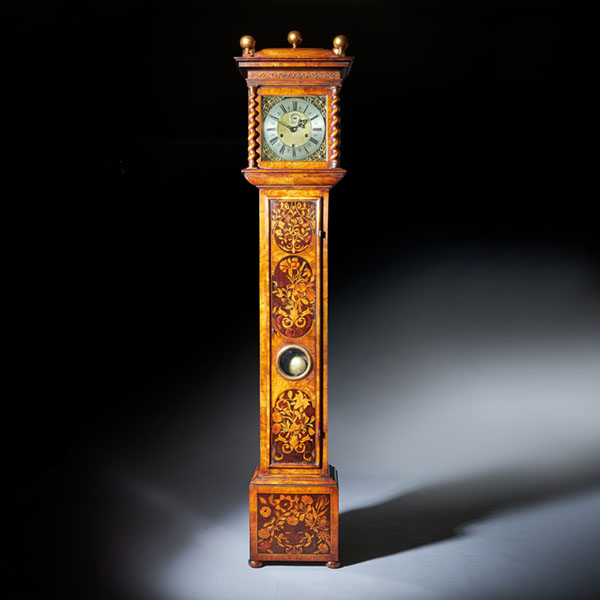
17th Century Charles II Month Going 10″ Marquetry Longcase Clock by John Wise
A superb Charles II month duration floral marquetry longcase clock by the well-known maker John Wise, c. 1680-85. Measure: 10" Follow UsA superb Charles II month duration floral marquetry longcase clock by the well-known maker John Wise, c....
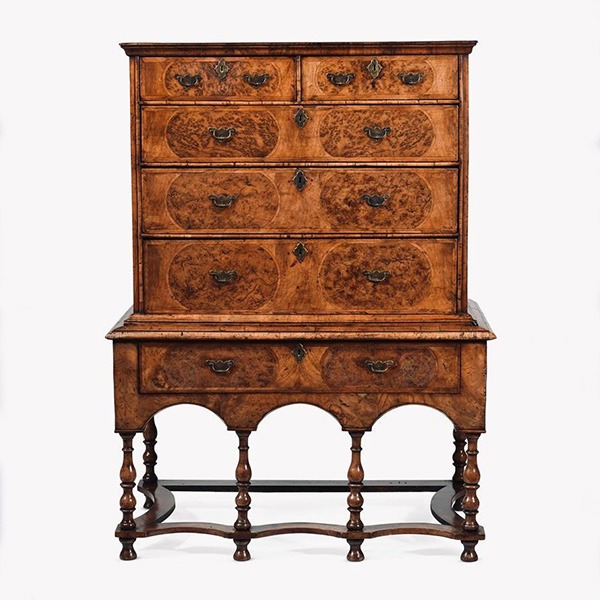
William and Mary 17th Century Walnut and Pollard Oak Chest on Stand
William and Mary 17th Century Walnut and Pollard Oak Chest on Stand £12,900Follow UsWilliam and...

A Rare 18th Century George II Carved Cut Gesso and Giltwood Mirror, Circa 1730
A Rare 18th Century George II Carved Cut Gesso and Giltwood Mirror, Circa 1730 £28,000Follow UsA...
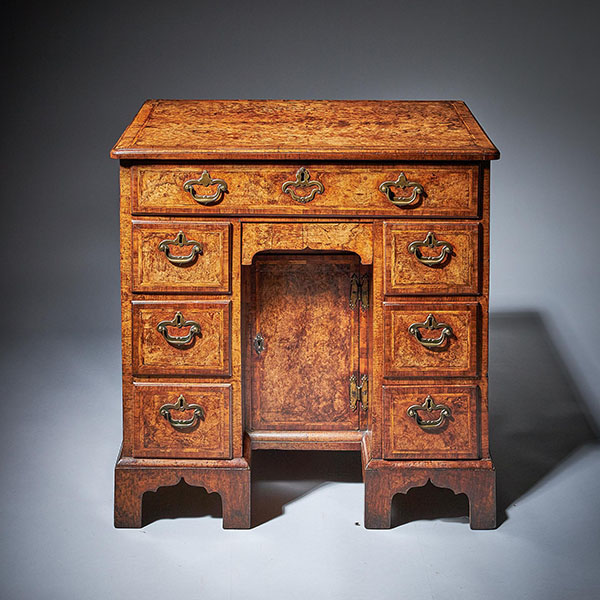
Rare Burr Walnut George II 18th Century Kneehole Desk, circa 1730-1740. England
Rare Burr Walnut George II 18th Century Kneehole Desk, circa 1730-1740. England £28,900Follow UsRare Burr Walnut George II 18th Century Kneehole Desk, circa 1730-1740. England Rare Burr Walnut George II 18th Century Kneehole Desk / Bachelor's...

A Fine 17th Century William and Mary Kingwood Strongbox or Coffre Fort, Circa 1690
A Fine 17th Century William and Mary Kingwood Strongbox or Coffre Fort, Circa 1690 £10,900Follow...

A Fine George III Chippendale Mahogany Dumb Waiter, Circa 1760 England
A Fine George III Chippendale Mahogany Dumb Waiter, Circa 1760 England. [wpforms_selector form_id="11387" show_title="on" _builder_version="4.23.1" _module_preset="default" hover_enabled="0" global_colors_info="{}"...

17th Century Charles II Month Going 10″ Marquetry Longcase Clock by John Wise
A superb Charles II month duration floral marquetry longcase clock by the well-known maker John Wise, c. 1680-85. Measure: 10" Follow UsA superb Charles II month duration floral marquetry longcase clock by the well-known maker John Wise, c....

William and Mary 17th Century Walnut and Pollard Oak Chest on Stand
William and Mary 17th Century Walnut and Pollard Oak Chest on Stand £12,900Follow UsWilliam and...

A Rare 18th Century George II Carved Cut Gesso and Giltwood Mirror, Circa 1730
A Rare 18th Century George II Carved Cut Gesso and Giltwood Mirror, Circa 1730 £28,000Follow UsA...

Rare Burr Walnut George II 18th Century Kneehole Desk, circa 1730-1740. England
Rare Burr Walnut George II 18th Century Kneehole Desk, circa 1730-1740. England £28,900Follow UsRare Burr Walnut George II 18th Century Kneehole Desk, circa 1730-1740. England Rare Burr Walnut George II 18th Century Kneehole Desk / Bachelor's...

A Fine 17th Century William and Mary Kingwood Strongbox or Coffre Fort, Circa 1690
A Fine 17th Century William and Mary Kingwood Strongbox or Coffre Fort, Circa 1690 £10,900Follow...

A Fine George III Chippendale Mahogany Dumb Waiter, Circa 1760 England
A Fine George III Chippendale Mahogany Dumb Waiter, Circa 1760 England. [wpforms_selector form_id="11387" show_title="on" _builder_version="4.23.1" _module_preset="default" hover_enabled="0" global_colors_info="{}"...













